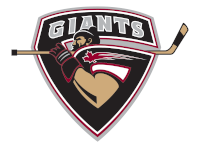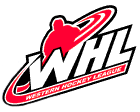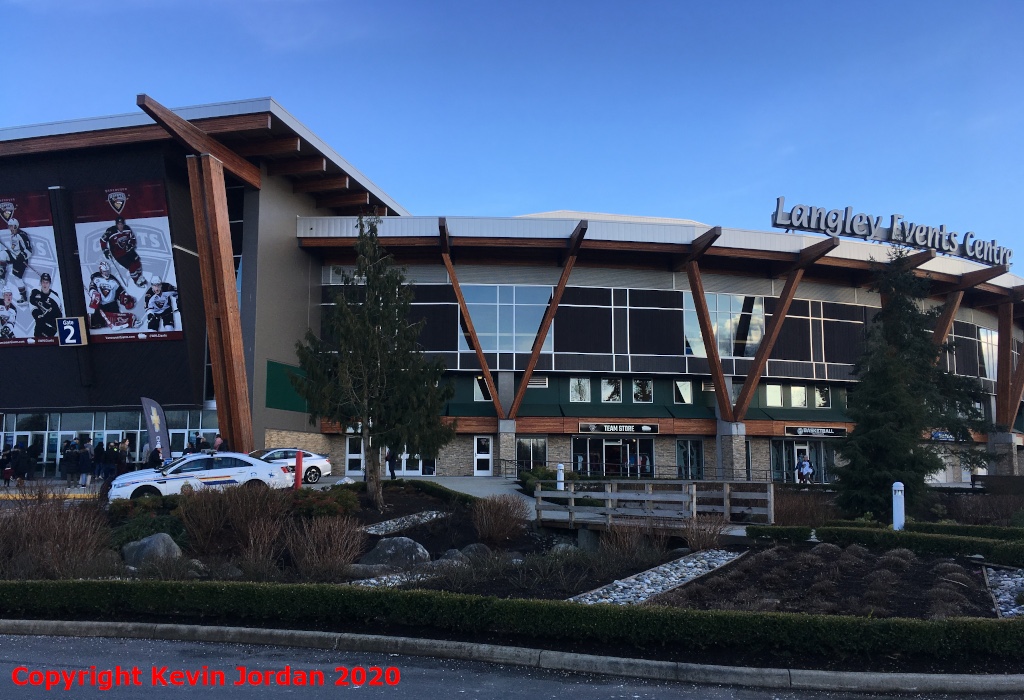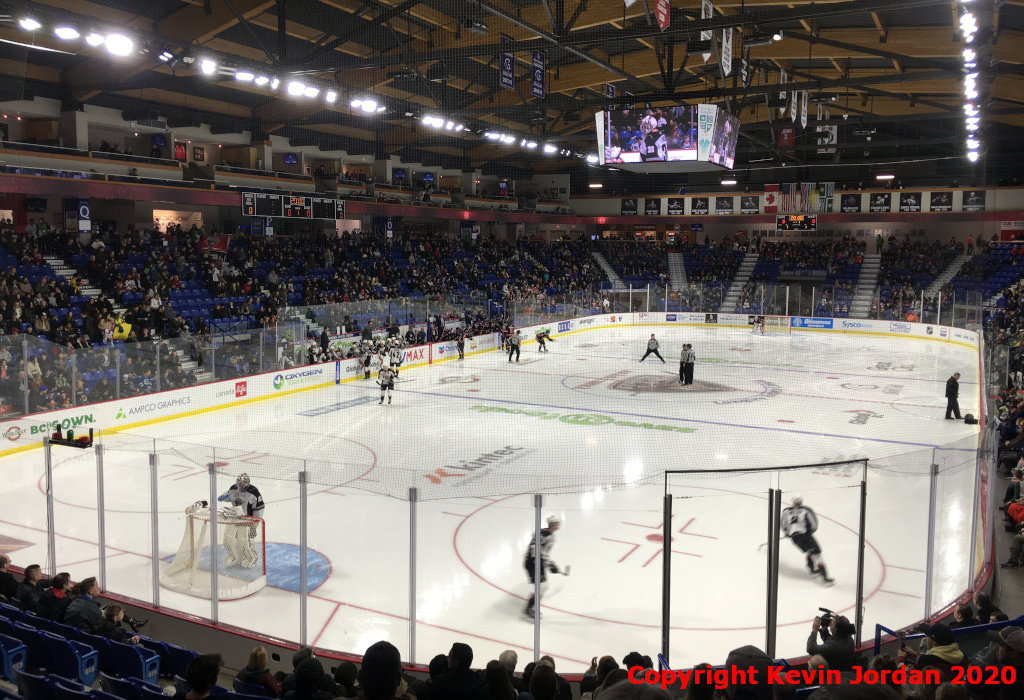
Vancouver Giants
Arena Name: Langley Events Centre
Capacity: 5,276
Built: 2009
Address: 7888 200th St. Langley, BC, V2Y 3J4
Telephone: (604) 882-8800
Ice Surface Size: Regulation
Franchise Date: 2001-02
WHL Championships: 1, in 2005-06
Memorial Cup Championships: 1, in 2006-07
Colours: Black, Red, Silver & White
Official Web Site: VancouverGiants.com
Venue Web Site: LangleyEventsCentre.com
Former Arenas: Pacific Coliseum
Rogers Arena

Langley Events Centre

What's the Arena Like?
First Visit: February 9, 2020
CHL Arena: 56
WHL Arena: 4
Junior hockey and large cities have never tended to go hand-in-hand. The CHL is at its best when it’s the biggest game in town, and the great junior hockey cities of Canada – your Kamloopses and your Reginas, your Londons and your Kitcheners, your Drummondvilles and your Halifaxes – tend to be cities where junior is the top dog, solely bearing the flag for a city or region. In the cities in Canada and the USA where junior has competed head-to-head with the NHL, a junior team has historically failed at least once in eight of nine, with only the Ottawa 67’s bucking the trend, perhaps by having existed for 25 years prior to the arrival of the NHL Senators.
To run a junior hockey team in an NHL city, then, there are two possible options. One, the model followed by Calgary and Edmonton, is to link the NHL and junior team, so that the NHL team can cross-promote their tickets and thereby raise the CHL’s profile. The model works and has been proven to be profitable, though the Edmonton Oil Kings playing at the cavernous Rogers Place obviously isn’t ideal. The same model has been applied to successful AHL teams in Montreal, Toronto and Winnipeg as well.
The second model, the model followed by Blainville-Boisbriand, Mississauga, and Winnipeg again, is to place the team in a junior-sized arena in the suburbs. Historically, this model hasn’t been as successful. Competing against the NHL is challenging when the NHL team has the ability to limit media coverage; moreover, it’s a challenge to make Mississaugans or Boisbrianders even think of themselves as such rather than as citizens of the larger metro area. Junior works best when the locals think of the team as representative of their city, and Mississaugans identify with the Maple Leafs far more than with the Steelheads.
This long-winded introduction ultimately leads us to the Vancouver Giants. The Giants were founded in 2001, and they played up to 2016 at the venerable Pacific Coliseum, the former home of the Canucks, still standing on the grounds of the Pacific National Exhibition in eastern Vancouver. The Giants drew reasonably well there in spite of their having no link with the Canucks, generally curtaining off the upper bowl but still holding their own in a crowded market. In 2016 the team announced they were moving out to the Vancouver suburb of Langley, 36 kilometres from their previous home, easily 45 minutes to an hour’s drive in rush hour traffic. Many were skeptical. Why would a team with a downtown arena of their own move out to become the Mississauga Steelheads West? But when I visited in 2020, I found, to my intense surprise, that the Giants are making it work.
Langley Events Centre opened in 2009, and I had always assumed that it was an Olympic project, but as it turns out the only Olympic event the rink hosted was a women’s hockey pre-tournament game. Regardless, it is a handsome building, situated on a small hill, and surrounded by free parking lots and landscaping. The arena has a couple of gyms in addition to the main arena bowl, and the architecture is typically west coast, with exposed timbers reminiscent of Aboriginal building techniques. There is a team store on ground level that, surprisingly, isn’t accessible during games.
The arena bowl’s main entrance hides a large staircase for access up to the game. I didn’t notice any other main ingress points, and the lines for the ticket-takers were long. There was also a wheelchair-accessible elevator, but it struck me as quite odd that there was no wheelchair ramp leading up to the bowl. The ice is at ground level, so the main top concourse is elevated.
Once in the main bowl, the Langley Events Centre is your typical 1990’s-and-onward clone rink. If you’ve ever been to Sault Ste. Marie or Moose Jaw or Acadie-Bathurst you already know what it’s like – an oval of comfortable seats, open top concourse with an uninterrupted view of the ice, elevated suite level. But the rink has its charms. The concourse is wide enough to accommodate the crowds, and washrooms are plentiful enough. There is a banquet hall-type facility behind one net that has a full-service bar open during intermissions, and the food concessions are both varied and plentiful. Triple O’s/White Spot is a BC-based fast food chain that exists in the In-N’-Out/Whataburger/Five Guys pantheon of quality fast food, and they have a location in the arena concourse serving burgers, fries and milkshakes. The Giants also have multiple souvenir kiosks available, given their team store is not accessible to patrons.
The arena ceiling is metal over unfinished wood beams, which is very West Coast. The ceiling is high enough to accommodate a larger video board than the one the arena has installed, which is adequate for replays but not large enough to show the score or penalties clearly. The Giants supplement the video board with old-style digital scoreboards on the red line and in the corners, which is a strange setup that reminded me of Saginaw’s old scoreboard. It’s jarring for those not used to it, particularly when there’s more than enough room to add the digital boards over centre ice. Music and promotion volume is fine, loud enough to be noticed, but not too loud.
What really makes Vancouver stand out from its suburban brethren, though, is the atmosphere. I’ve seen games in suburbs from Mississauga to Brampton to Plymouth to Boisbriand, and those rinks are all the same – reasonably nice, boring, and empty. The Giants game I went to wasn’t sold out, but it was nearly full, and the crowd was loud and into the game.
I had wanted to go see the Giants at Pacific Coliseum for over a decade. The Coliseum is the last old-school NHL arena still open at which I haven’t seen a hockey game, and man, it was and still is on the bucket list. When the Giants announced they were moving out to Langley to save on arena rental costs, I assumed it was the start of an inexorable decline that would someday result in the team moving to Nanaimo or something. But that’s not what happened.
I wouldn’t have believed it if I hadn’t seen it, but Vancouver bucks the trend of junior teams in large cities either linking with the NHL team of failing in the suburbs. The Giants’ rink is truly their own, the fanbase hasn’t abandoned them since they left the Coliseum, and while there isn’t much competition for the title, they’re easily the healthiest big-city junior team in Canada without either an NHL link, or decades of history like the Ottawa 67’s. I enjoyed my trip to see the Giants far more than I was expecting, and the team’s fan support is the biggest reason why. If their success could only be repeated in other NHL cities, the CHL would be a far healthier league.
Junior hockey works best in cities where the CHL is the biggest and best game in town. In Vancouver, the Giants will always be #2 to the Canucks. But the Giants obviously still have a place in the city’s sporting culture, and I hope that continues long into the future.
Inside Langley Events Centre

Future Developments
There are no plans to renovate or replace Langley Events Centre.
Franchise History
The Giants were founded as an expansion team in 2001-02, playing out of the Pacific Coliseum on the PNE Grounds in East Vancouver. They moved out to Langley in 2016.
Retired Numbers
Bizarrely, the Giants haven't retired the numbers of any player who has played for them, but have retired the numbers of two players that have not. Pat Quinn and Gordie Howe were both part of the Giants' original ownership group, and both men had their playing numbers retired by the team when they died.
3 Pat Quinn
9 Gordie Howe
3 Pat Quinn
9 Gordie Howe
Feedback
If anything is incorrect or you have something to add, please e-mail me at  and I'll update the guide.
and I'll update the guide.
 and I'll update the guide.
and I'll update the guide.Copyright © WHL Arena Guide, 2002-20.
All rights reserved.
Last Revised: February 14, 2020